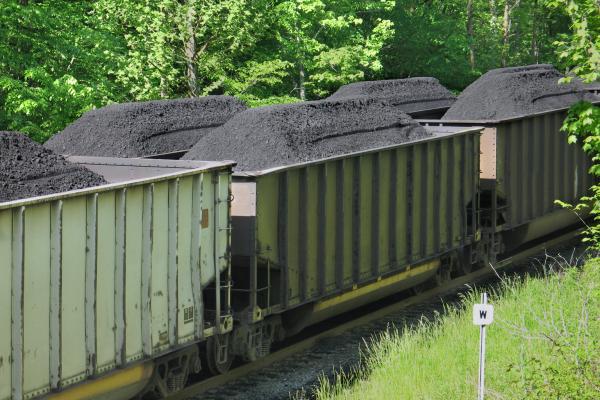WEST VIRGINIA’S coal-addicted economy is busted. Dozens of bankrupt coal companies are busted. A coal company CEO is busted for flagrant safety violations that contributed to an explosion killing 29 miners.
Boom-and-bust cycles have a jagged history in the central Appalachian coal basin of southern West Virginia, eastern Kentucky, and southwest Virginia. America’s industrial revolution prospered on Appalachia’s steam and coking coal. Hard-gained union struggles brought miners and their communities an improved living standard. Yet as time marched on, machinery replaced miners, the coal industry busted unions, Appalachian coal seams played out, and cheaper Western coal and fracked shale gas outcompeted.
Coal-dependent economies are now tanking. Miner layoffs have skyrocketed. Policymakers have long ignored forecasts of coal’s impending decline. The West Virginia legislature, facing a major state revenue shortfall, is considering drastic budgetary cuts—such as closing state parks, college branch campuses, and state police detachments—while, incredibly, introducing bills to attempt to bring back the coal industry by reducing its severance and worker-compensation taxes.
Coal will not bounce back. From coal’s perspective, the national debate on coal and climate change has largely been lost.
The Clean Power Plan announced by the EPA in June 2014 seeks to reduce climate-warming CO2 emissions 30 percent by 2030. Projected air quality improvement will also deliver significant financial and life-protecting health benefits. However, since West Virginia politicians dance to the strings of their coal-industry puppet masters, State Attorney General Patrick Morrisey is leading a coalition of 25 states asking a federal court to strike down the Clean Power Plan, calling it a “war on coal.”
In April, Peabody Energy, the world’s largest coal corporation, joined the ranks of dozens of other coal companies to file Chapter 11 bankruptcy. Steam coal demand has decreased as power generation increasingly transitions to natural gas and renewables, complemented by improved consumer efficiency. However, a leading reason for coal industry bankruptcies is that, five years ago, several major coal corporations made huge investments to acquire coking coal assets (metallurgical coal used in making steel), much of it in central Appalachia. The gambit failed when anticipated overseas-export demand dropped, stranding their newly acquired assets.
Companies undergoing Chapter 11 bankruptcies have sought to shed “unproductive” assets, such as retirees’ and disabled miners’ pensions and health benefits, and responsibilities for environmental cleanup. When Patriot Coal filed for bankruptcy in 2012, a judge permitted it to jettison health responsibilities while authorizing company executives $7 million in retention bonuses.
IN 2010, 29 miners died in a coal dust explosion at the nonunion Upper Big Branch mine in southern West Virginia. Court testimony revealed that under pressure to maximize output, Massey Energy officials sidestepped safety regulations and gained advance warning of inspections. The Mine Safety and Health Administration failed to enforce multiple violations. The trail eventually led to Massey CEO Don Blankenship, whose trial resulted in a misdemeanor conviction of “conspiring to willfully violate mandatory mine safety and health standards.” Blankenship was sentenced the maximum $250,000 fine and a year in prison. He is appealing. Meanwhile, relatives and friends of the 29 dead miners are incensed at justice so lightly served.
Federal proposals to resuscitate the busted Appalachian economy are forthcoming. A looming question is whether there remain enough human and infrastructure resources in the coal-forsaken rural hills and hollows for help to take hold.

Got something to say about what you're reading? We value your feedback!

